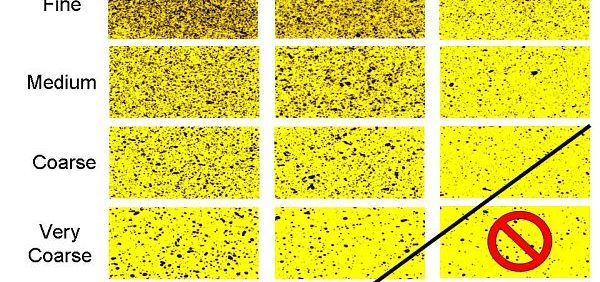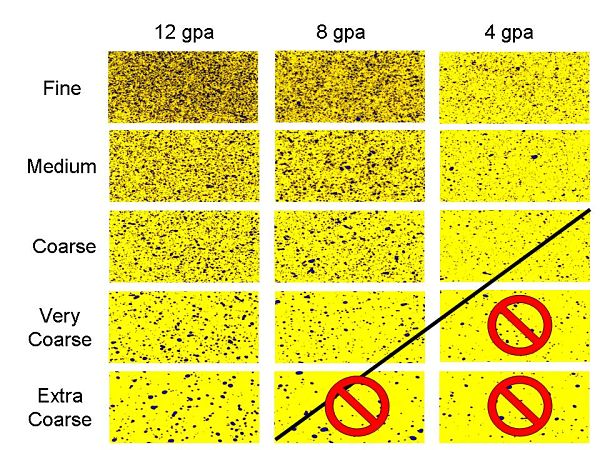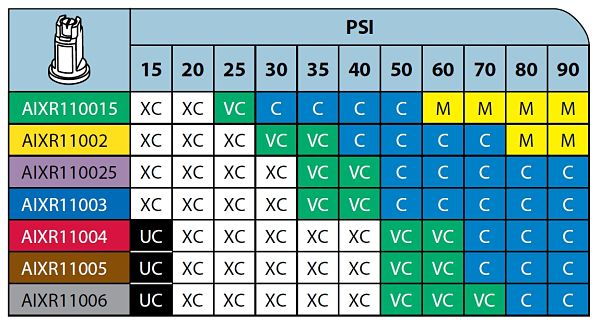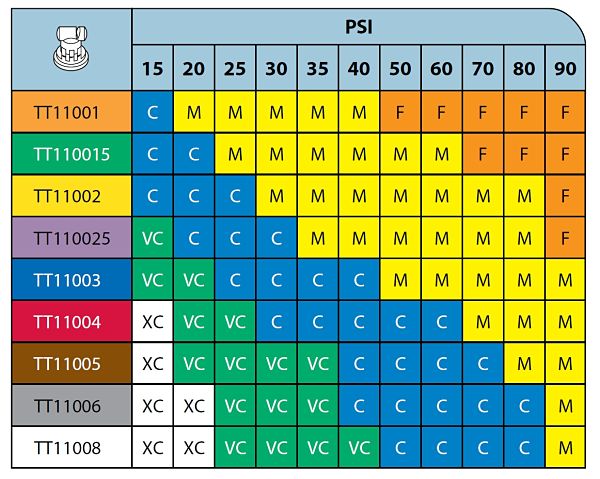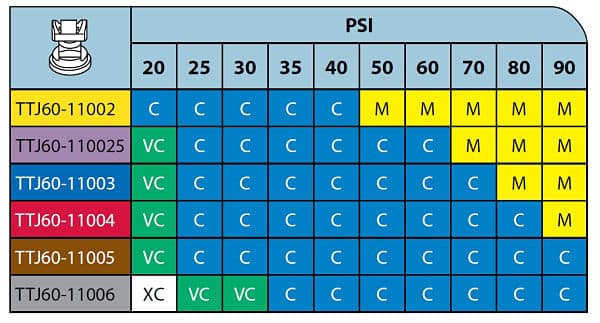Growers have two key considerations when it comes to spraying — good coverage and drift management. A fine mist spray may provide better coverage of the target area, but this mist is also more prone to drift. Drift means a loss of efficacy, a waste of product, and perhaps most worrisome, damage to non-target areas — including neighbor’s crops, shelterbelts and yard sites.
Tom Wolf, owner of Agrimetrix Research & Training, based in Saskatoon, provides the following 12 tips to get improved results from a coarse spray that is less prone to drift. (These tips were presented in a Canola Council of Canada webinar June 2, 2011.) The first 6 tips will help reduce the risk of spray drift. The last 6 tips are about spray efficacy.
Tip 1. Choose a herbicide that can handle large droplets.
With canola, growers often do not have much choice when it comes to herbicide. They use the product to match the herbicide tolerance system. Where possible, consider the following when making a herbicide choice:
—Glyphosate is suited to low drift (coarse droplet) sprays, but remember that at the low water volumes that favor glyphosate, coarse sprays may not provide enough droplets per square inch. A combination of coarse spray and low (but not ultra low) water volume is best to make sure you get droplets on even the smallest weeds.
—Liberty can work with a coarse spray nozzle but it needs at least 10 gallons per acre to maintain efficacy. Click here for more Liberty performance tips.
—Group 2 products for the Clearfield system in general perform well with coarse sprays.
Tip 2. Use a low drift nozzle to produce a coarse to very coarse spray.
Ideally, you want to find a nozzle that can achieve a coarse spray at a broad range of pressures. But too coarse and you’re not getting adequate coverage, especially at low water volumes. The image below uses water-sensitive paper to demonstrate coverage based on droplet size and water volume. Read tips 8 and 9 for more on this.
Tip 3. Keep your boom low.
A boom at 50-60 cm (20-24”) above the target will have half the drift of a boom 90-100 cm (36-40”) above the target. Auto-boom height controllers make it possible to lower the boom and maintain the desired travel speed without having to worry about the boom tips hitting the ground.
One challenge with a lower boom is to achieve 100% spray pattern overlap at the same time. Wolf prefers to see 100% overlap, not the 30% overlap in many recommendations, because that provides a uniform number of droplets across the whole field. Spray from one nozzle should reach to the middle of the spray pattern of the adjacent nozzle. Pick a fan angle and pressure that achieves this at a low boom height.
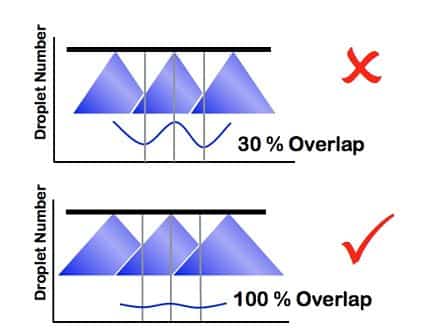
Tip 4. Know what’s down wind and what harms it.
Canola is sensitive to drift. Consider your neighbor’s Roundup Ready canola when you’re spraying Liberty on InVigor canola, for example.
Tip 5. Let the weather help you.
Calm early mornings can actually increase spray drift damage. The spray can hang in the air, making it impossible to predict when and where it will settle. This dense cloud can do a lot of damage to a non-target field or yard site. Bright sunny days with some wind are ideal times to spray to minimize drift damage. In these conditions,thermal turbulence tends to move any spray that does hang in the air up and down instead of laterally along the ground. Anything that goes up is rapidly diluted in the atmosphere.
Tip 6. Talk to people who might be affected.
If you have to spray on days that are not ideal, talk to neighbors who might be affected by spray drift. Damaging a sensitive crop or a relationship is probably not worth the risk.
Tip 7. Spraying at the right time is more important than how you do it.
AAFC research from Scott, Saskatchewan showed that spraying 7 days after crop emergence generated higher yields than spraying 17 days after emergence, no matter the droplet size. A finer spray may be more efficacious than coarse spray, but finding a suitable day to apply a fine spray without significant drift can be difficult. When it comes to crop yield, using a low drift nozzle early to get rid of weed competition was better than waiting longer for a relatively calm day to use a finer spray. Hire a plane if necessary to achieve the earlier spray timing.
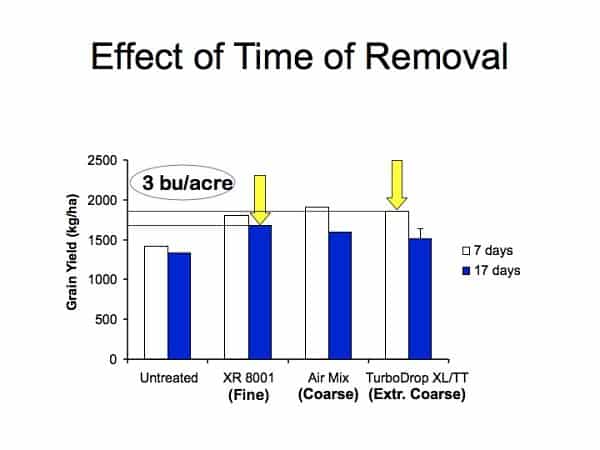
Tip 8. Choose a nozzle that produces a coarse spray in the middle of its pressure range.
A nozzle that produces a coarse spray through the middle of its pressure range gives you the most flexibility to change spray pattern and droplet size as you adjust ground speed and pressure. For example, if you have a nozzle that produces coarse spray at 40 to 80 psi and you’re working at 60 psi, this nozzle gives you the flexibility to slow down or speed up and still achieve a coarse spray. The charts shown below provide examples.
Tip 9. Know the pressure range of your nozzle and choose the middle of it.
This expands on Tip 8. When you increase travel speed, spray pressure must increase considerably more to maintain the spray rate per acre. For example, if you increase speed by 10%, pressure may have to increase by 25%. Droplet size shrinks and drift potential increases with higher pressure. Know what speed range your nozzle provides to achieve coarse sprays. This range may be fairly narrow for high pressure nozzles. For low pressure nozzles, the speed range tends to be a lot wider.
Tip 10. Higher ground speed is not the only way to increase productivity.
Speeding up increases the amount of acres you can cover in a day, but it also causes greater pressure fluctuations to maintain spray rates over a range of speeds. Consider other methods besides higher speeds to increase productivity.
—Larger tanks means you can cover more acres between fills. But larger tanks add weight. Heavier units cannot always get through a field in soft conditions where a lighter more nimble unit can. If a heavier higher horsepower unit can get through a soft field, it often leaves ruts.
—Use a wider boom. With automatic boom height control, wider booms are easier to handle. Going from a 90 to 120 foot boom increases productivity significantly. Make sure the pump can achieve consistent pressure across the whole width.
—Choose a sprayer with a more convenient loading area and with a high speed pump. This will reduce fill time.
Tip 11. Select water volume and spray quality based on target and pesticide characteristics.
Wolf provides the following key principles:
—Grassy weeds are the most challenging target because they have small and vertical leaves that are difficult to wet. Avoid very coarse sprays. Grassy weeds also tend to require higher water volumes.
—Broadleaf weeds will tolerate larger droplets.
—Know the crop protection product’s mode of action. Contact products need better leaf coverage than systemic products.
—If you’re unfamiliar with a new weed and you don’t want to make a mistake on the droplet size, pour some water on the weed. A weed that gets wet and stays wet is unlikely to present a droplet size issue. Coarse sprays will usually provide good efficacy. But if the water beads and runs off, use higher water volume and do not use a “very coarse” spray. Cleavers, lamb’s-quarters and kochia are weeds that are hard to “wet.”
—Canopy density. If you need to get through a dense canopy to apply fungicide or insecticide on low targets, use a higher water volume and slower travel speed.
—Avoid the combination of extra coarse droplet size and low water volumes. This will not provide the droplets per square inch required to hit every weed.
Tip 12. Don’t let double nozzles confuse you.
Benefits of double nozzles (with forward and backward facing jets) may be slightly oversold for weed control. Double nozzles are more suited to fungicide application on a vertical target, such as a wheat head.
AAFC researchers found that tips that angle spray forward can provide better coverage and improve spray efficacy for vertical targets, especially with coarse sprays. Note that with a high boom, angling does not provide the same benefit.

